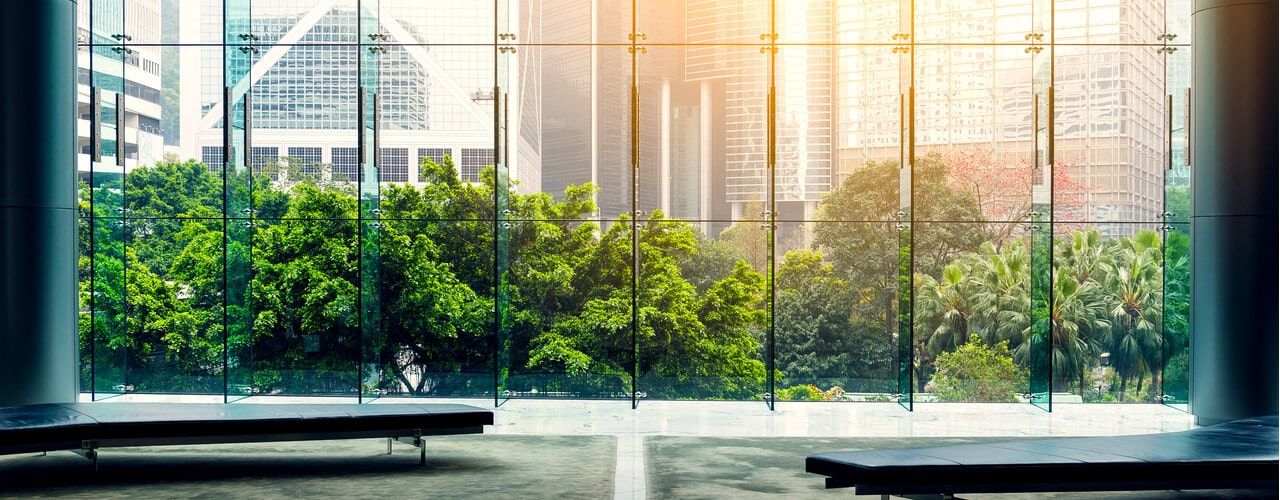In terms of its reduced energy usage and increased efficiencies, New York City is the greenest city in the U.S. In fact, NYC is now home to almost 520 million square feet of green building space.
The LEED certification program is the driving force for New York’s eco-credentials. Under the LEED (Leadership in Energy and Environmental Design) program from the U.S. Green Building Council (USGBC), a building’s environmental conscience is measured across its development.
LEED is now one of the most widely used green building rating systems in the world. According to the LEED website: “Green building is the practice of designing, constructing and operating buildings to maximize occupant health and productivity, use fewer resources, reduce waste and negative environmental impacts, and decrease life-cycle costs.”
The USGBC also claims LEED certification leads to faster leasing rates, higher resale values, and reduced energy usage to boost your brand and establish you as a leader in green building.
Here are some of the greenest buildings in the Big Apple, based on the LEED program:
Hearst Tower
In 2012, the Hearst Tower was reportedly the first building in the world to be awarded both Gold and Platinum LEED status. The Gold certification was awarded under the New Construction category and the Platinum certification for its Sustainable Building Operations.
Its sustainable features include automatically regulated artificial lighting, innovative heating and cooling systems, rainwater collection and reuse, the use of recycled construction materials (making up 85 per cent of the building’s structure), a composting program where 100% of its wet food waste is composted and low-toxicity furniture and paint.
Located between 300 West 57th Street and 959 Eight Avenue, the Hearst Tower was originally constructed in 1928 with no real regard for sustainability. It wasn’t until its 2006 renovation that it started to shift its focus to environmental matters.
Empire State Building
One of the world’s most iconic buildings, the Empire State Building also has LEED Gold certification – making it one of the few global landmarks to earn this designation.
A new sustainability drive for the building was launched in 2009, which saw the structure redesigned to increase its energy efficiency. Every single window in the building (more than 6,000 in total) were reportedly replaced during the retrofit, with automated building management systems and updated insulation systems helped further push the building’s sustainability.
As a result, the building reportedly saved USD$2.3 million in energy costs over one-year thanks to its new green measures.
Bank of America Tower at One Bryant Park
Located on West 43rd Street, this 51-story building was completed in 2009 and received a LEED Platinum certification soon afterwards, making it the first skyscraper in North America to gain this award.
The building itself uses daylight, fresh air, and other natural inputs to connect its residents with the natural environment, a phenomenon known as “biophilia”. The building also features waterless urinals, recycled rainwater, and concrete partially composed of blast furnace slag to boost its eco-credentials.
However, some critics claimed the building highlights the shortcomings with the LEED certification. A recent report in The Guardian states: “One Bryant Park, for example, has been attacked for its relatively high energy usage – critics point out that, according to data released by New York City, it uses more than twice as much energy per square foot as the Empire State Building.”
10 Hudsons Yard
This was the first office building to be completed as part of the Hudson Yards master plan urban renewal project, which will eventually house 16 skyscrapers.
Located in Midtown Manhattan, the building reportedly boasts a LEED Platinum BD+C certification for its core and shell and a LEED Gold certification for its:
- Stormproof systems
- Co-generation
- Thermal micro-grid
- Efficient air flow system
- Advanced lighting controls
- Under-floor or overhead air distribution
- Central chilled water plant
- Water harvesting
One World Trade Center
This may be the tallest building in the Western Hemisphere, but it was also awarded LEED Gold certification in 2016.
A number of features helped One World Trade Center gain this certification. For example, the green building reportedly allows natural light to enter more than 90 per cent of its office areas to improve the quality of the space and reduce its energy expenditure. The building also uses low-E glass coating to minimize heat gain.









